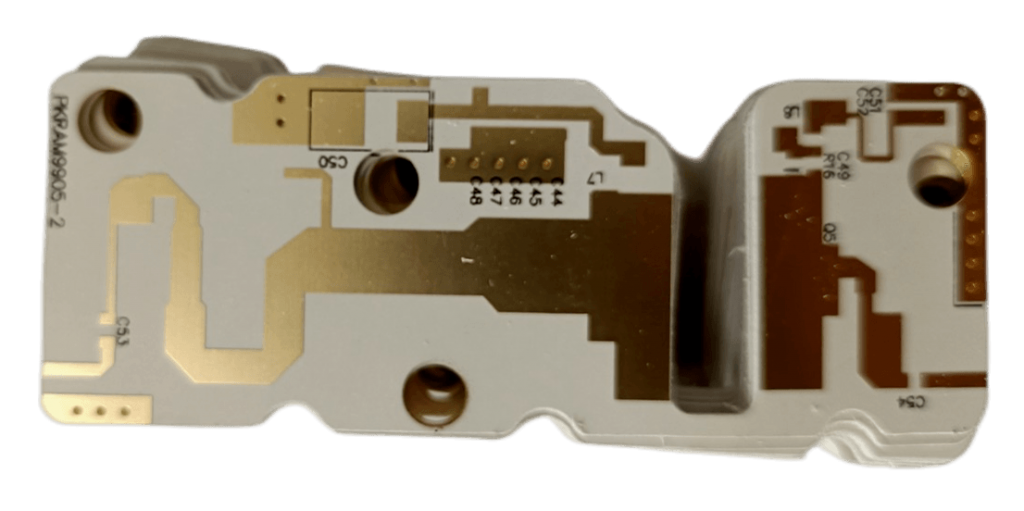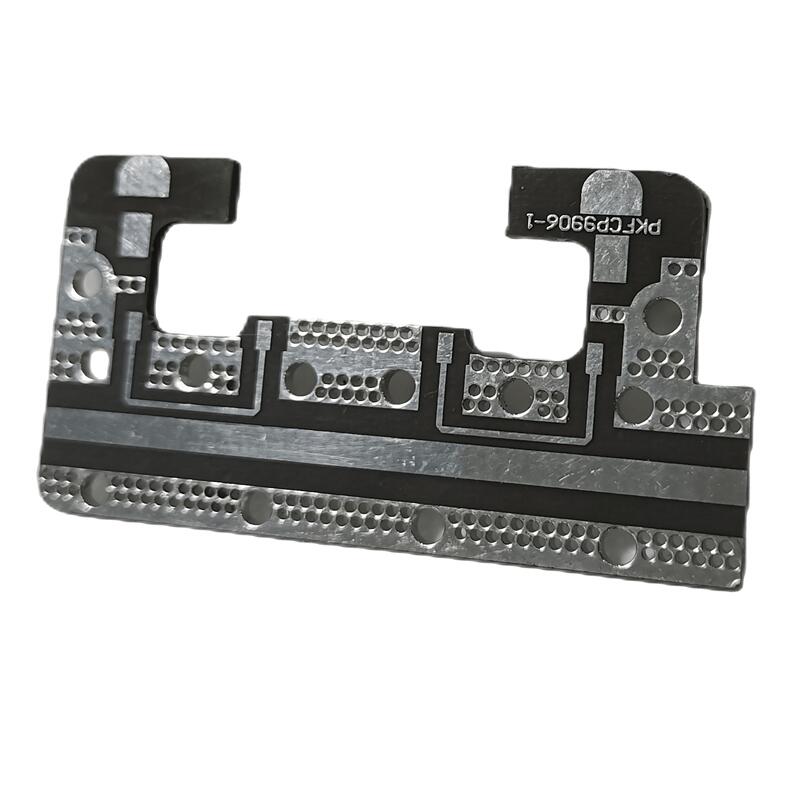
Welcome to the fascinating world of Rogers PCBs, where materials and manufacturing techniques intertwine to create powerful and innovative circuit boards. In this article, we will take a deep dive into the intricacies of Rogers PCBs, exploring the various materials used and the cutting-edge manufacturing techniques employed.

Rogers PCBs are highly regarded in the industry for their exceptional performance and reliability. These circuit boards are made using advanced materials like Rogers RO4000 series and RO3000 series, which exhibit excellent dielectric properties, low loss, and high thermal conductivity. Such materials make them ideal for high-frequency applications, such as 5G communications, aerospace, and automotive industries.
When it comes to manufacturing techniques, Rogers PCBs stand out for their precision. From the design phase to the final product, every step demands meticulous attention to detail. Advanced techniques like multilayer pressing, custom lamination, and controlled impedance ensure the highest quality boards that meet the stringent requirements of modern applications.
Whether you’re a PCB enthusiast or an industry professional, join us as we unveil the secrets behind Rogers PCBs. Prepare to be amazed by the craftsmanship and engineering excellence that goes into creating these remarkable circuit boards.
Rogers PCBs, named after the renowned manufacturer Rogers Corporation, are high-performance circuit boards used in a wide range of applications. These circuit boards are known for their exceptional electrical properties and reliability. Rogers PCBs are made using advanced materials like Rogers RO4000 series and RO3000 series, which exhibit excellent dielectric properties, low loss, and high thermal conductivity.
Rogers PCBs are designed to meet the demanding requirements of high-frequency applications, such as 5G communications, aerospace, and automotive industries. These circuit boards are capable of handling high-speed signals without significant signal loss, making them ideal for applications where signal integrity is crucial. The unique properties of Rogers PCBs make them a preferred choice for high-frequency designs.
The use of Rogers PCBs offers several advantages over traditional circuit boards. One of the key advantages is their superior electrical performance. Rogers PCBs exhibit low loss, which means that the signals can travel through the board with minimal attenuation. This low loss characteristic makes Rogers PCBs suitable for high-frequency applications where signal integrity is critical.
Another advantage of Rogers PCBs is their excellent thermal conductivity. The advanced materials used in Rogers PCBs have high thermal conductivity, allowing them to dissipate heat efficiently. This property is particularly important in applications where thermal management is crucial, such as power electronics and automotive systems.
In addition to their electrical and thermal properties, Rogers PCBs are also known for their reliability. These circuit boards are engineered to withstand harsh environments and have excellent resistance to moisture, chemicals, and temperature variations. The reliability of Rogers PCBs makes them a preferred choice for mission-critical applications where failure is not an option.
Rogers PCBs are made using advanced materials that offer exceptional performance. The Rogers RO4000 series and RO3000 series are among the most widely used materials in the manufacturing of these circuit boards.
The RO4000 series is a high-frequency laminate material that offers excellent electrical properties, low loss, and high thermal conductivity. It is designed for applications that require high reliability and signal integrity. The RO4000 series is commonly used in high-frequency designs, such as RF amplifiers, antennas, and satellite communication systems.
The RO3000 series, on the other hand, is a lower-cost alternative to the RO4000 series. It offers good electrical performance and is suitable for applications that do not require the highest performance levels. The RO3000 series is commonly used in consumer electronics, automotive systems, and industrial applications.
Rogers 5880 is a type of high-frequency, high-performance circuit board material commonly used in the electronics industry for applications involving radio frequency (RF), microwave, and high-speed digital circuits. It is manufactured by Rogers Corporation, a leading supplier of advanced materials.

Here are some key features and characteristics of Rogers 5880 PCB material:
Keep in mind that specific properties and characteristics of Rogers 5880 PCBs may vary depending on the exact grade or variant of the material used. Engineers and designers select Rogers 5880 and similar high-frequency PCB materials when they require precise control over signal integrity and performance in demanding RF and microwave applications.
The manufacturing of Rogers PCBs involves several advanced techniques that ensure the highest quality and performance. One of the key techniques used is multilayer pressing, which involves bonding multiple layers of copper-clad laminates together. This process ensures a strong and reliable bond between the layers, resulting in a robust circuit board.
Another important manufacturing technique is custom lamination, where the copper layers are selectively etched to create the desired circuit patterns. This technique allows for precise control over the impedance and signal integrity of the circuit board. Custom lamination is crucial in high-frequency designs where impedance matching is critical.
Controlled impedance is another key aspect of Rogers PCB manufacturing. The impedance of a circuit board determines how well it can transmit signals without distortion or loss. Rogers PCBs are manufactured with strict control over the impedance to ensure optimal performance. This involves precise control over the dielectric constant and thickness of the laminate material.
When designing a circuit board using Rogers PCBs, there are several key considerations to keep in mind. One of the primary considerations is the frequency of operation. Rogers PCBs are specifically designed for high-frequency applications, and the design should be optimized for the desired frequency range.
Impedance matching is another important aspect of Rogers PCB design. Impedance matching ensures that the signals can travel through the circuit board without reflection or distortion. This involves careful selection of trace widths, spacing, and layer stackup.
Thermal management is also crucial in Rogers PCB design. The high thermal conductivity of Rogers PCB materials allows for efficient heat dissipation, but proper thermal vias and heat sinks should be incorporated into the design to ensure optimal cooling.
Rogers PCBs find applications in various industries where high-performance circuit boards are required. One of the primary applications is in the field of 5G communications. The high-frequency capabilities of Rogers PCBs make them ideal for 5G base stations, antennas, and other wireless communication systems.
The aerospace industry also extensively uses Rogers PCBs in avionics, radar systems, and satellite communications. These circuit boards offer the reliability and performance required for aerospace applications. Similarly, the automotive industry relies on Rogers PCBs for advanced driver assistance systems, infotainment systems, and power electronics.
Other applications of Rogers PCBs include medical devices, industrial automation, and test and measurement equipment. The versatility and performance of Rogers PCBs make them suitable for a wide range of demanding applications.
When it comes to Rogers PCBs, choosing the right manufacturer is crucial. A reputable manufacturer with experience in Rogers PCB manufacturing can ensure the highest quality and reliability. Factors to consider when selecting a manufacturer include their expertise, manufacturing capabilities, quality control processes, and customer support.
It is also important to consider the manufacturer’s certifications and compliance with industry standards. A manufacturer that adheres to strict quality standards and has the necessary certifications demonstrates their commitment to delivering superior products.
Working with Rogers PCBs can present some unique challenges. One of the common challenges is the cost of materials. Rogers PCB materials are more expensive compared to traditional FR4 materials, which can impact the overall cost of the project. However, the exceptional performance and reliability of Rogers PCBs often justify the investment.
Another challenge is the complexity of design. Rogers PCBs require careful consideration of impedance matching, thermal management, and other design parameters. This requires expertise in high-frequency design and familiarity with the specific characteristics of Rogers PCB materials.
Manufacturing lead times can also be a challenge when working with Rogers PCBs. The advanced manufacturing techniques and stringent quality control processes can result in longer lead times compared to standard circuit boards. It is important to plan ahead and work closely with the manufacturer to ensure timely delivery.
Rogers PCBs are a testament to the power of innovation and engineering excellence. These circuit boards offer exceptional performance, reliability, and thermal management capabilities. From the advanced materials used to the precise manufacturing techniques employed, every aspect of Rogers PCBs is designed to meet the demanding requirements of modern high-frequency applications.
Whether you’re designing a 5G base station, an aerospace avionics system, or a power electronics module, Rogers PCBs are the go-to choice for superior performance. By understanding the materials, manufacturing techniques, and design considerations associated with Rogers PCBs, you can unlock the full potential of these remarkable circuit boards and create groundbreaking solutions for the future.
Here you will find many quick questions and answers about Rogers PCBs,don’t hesitate to contact us, our email is service@pcbsky.com